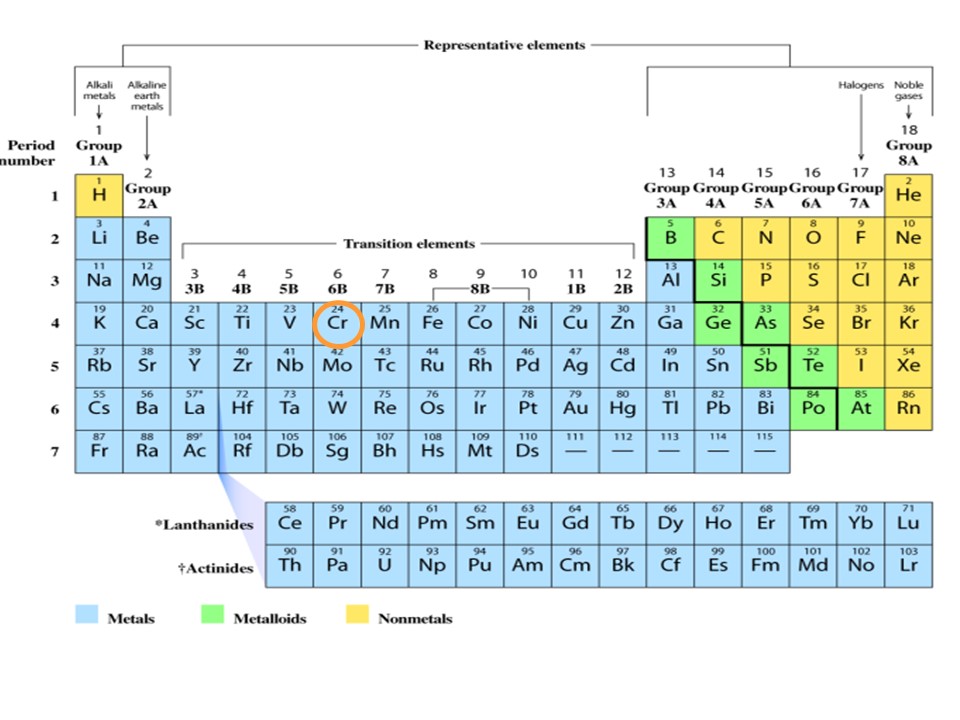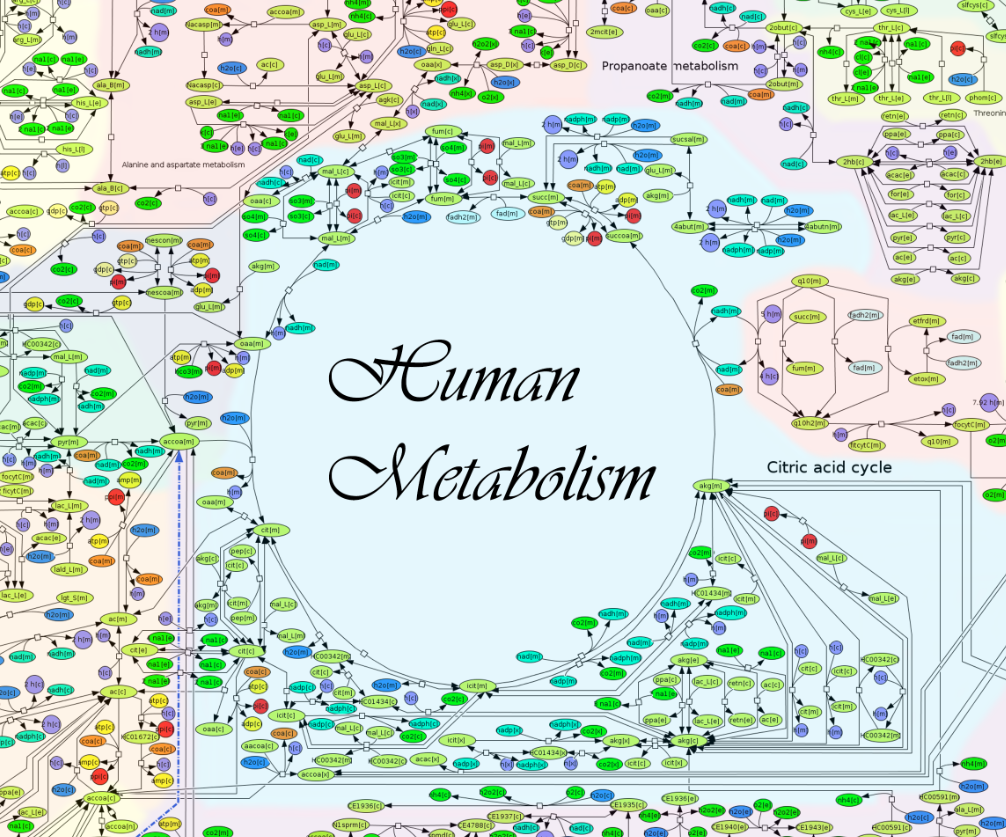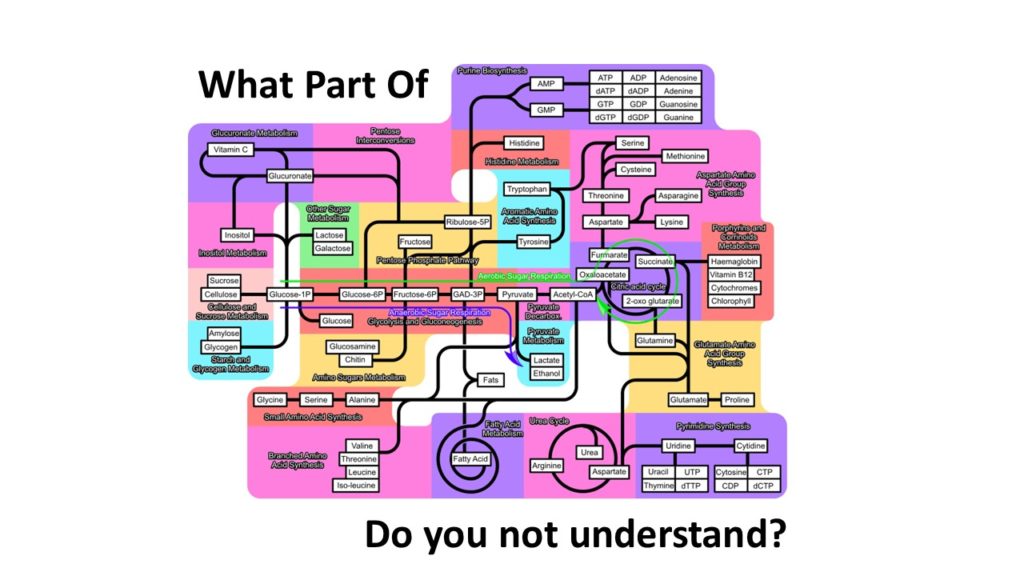What do the foods in this picture have in common?
They all contain chromium – an element found in the periodic table.

Why should we care about Chromium?
- It is necessary for the function of nerves, muscles, intestinal function, and to neutralize stomach acid.
- It is necessary for the breakdown of carbohydrates in our body.
- In short, it is an important cofactor for more than 300 chemical reactions in the body.
The sum of all of these chemical reactions is what we call…

(from the Google Map of Human Metabolism)
Which leads us to day one of Nutritional Biochemistry:
Chromium, alcohol, stress, elevated triglycerides – all of these things link through nutritional biochemistry. At first glance, however, alcohol does not seem to have any direct link to triglycerides. There is no fat in alcohol, so how could it possibly change blood lipid levels? To understand this, you must first understand that our metabolism can create components of triglycerides from alcohol. Chromium, a fundamental element, plays a role in this process. But chromium is not something that comes to mind when we think about nutrition. The point? If you want to tell people what to eat, you have to know how the chemicals in food change the molecules our body produces; these molecules are called metabolites. This is what Nutritional Biochemistry is all about.
Sure – everyone has heard horror stories about biochemistry.

(modified from https://commons.wikimedia.org/w/index.php?curid=15488348)
But don’t worry- it is actually more fun and interesting than you can possibly imagine. So settle in, keep an open and curious mind, ask a lot of questions, and come with me to explore the universe of nutritional biochemistry!


